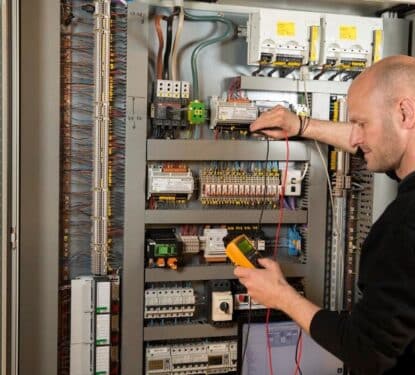Solar panels glimmer from millions of rooftops around the world, providing power more efficiently and cheaply than ever before. Energy storage systems are becoming commonplace, feeding on excess solar power then releasing it when the sun goes down or when grid electricity rates are high. Sensors and communication technology throughout the grid allows for intelligent and immediate response to demand and supply fluctuations. Smart meters provide unprecedented access to energy use data.
It is tempting to think that this evolution in the power sector is driven by technological innovation but with a closer look you might see that the technology is actually reacting to the consumers’ evolving power demands. These demands are not merely increases in consumption, nor are they simply driven by environmental responsibility, although those are important factors. Mirroring wider trends seen across modern society, the power consumer now demands much greater flexibility, visibility and control over their power provision.
Like the nuclear, coal and gas power plants that defined our recent energy era, our demand has been predictable and dependable. Renewable energy, in contrast, is often unpredictable, so our new intelligent grid incorporating demand response and energy storage was essential to the large-scale viability of solar power generation. However, recently, our consumption has also become less predictable, requiring the same kind of intelligent, flexible response.
In the UK, in 2001, a sharp power spike of 2,290MW occurred just after around 20m viewers finally discovered who shot Phil Mitchell in the popular soap opera EastEnders. Not breaking any stereotypes, the widely accepted reason for this spike was that almost one third of the British population switched their kettles on to make a nice cup o’ tea to help digest the big news. The TV guide has traditionally been one of the most important forecast planning documents for the UK’s National Grid strategists!
Fast forward 17 years and television viewing habits have changed drastically. Nearly 7.5 million UK households subscribed to Netflix as of the third quarter of 2017, about 80% of the households that subscribed to at least one subscription-video-on-demand service overall, according to the Broadcasters’ Audience Research Board, which conducts regular surveys about the UK’s TV landscape. A further, 3.84 million households subscribed to Amazon’s streaming video service, the survey found. For the National Grid, that means people could be making their tea at any moment.
On demand television and streaming media have now completely changed viewing habits in the UK and across the pond. US media research in 2017 showed that Netflix alone has more subscribers than the number of customers for the country’s largest cable companies, at 50.85 million versus 48.61 million respectively. Such is the prevalence of media consumption, these new viewing habits are changing the power demand landscape in almost every industrialized nation. The innovative technology of advanced grid systems was needed to adapt to these kinds of changes in this latest chapter of the IT revolution.
There are more obvious examples too. The continued strengthening of environmental responsibility across society drove substantial early adoption of solar power and energy storage technology, thereby increasing production and reducing cost. This is laying the foundation for the “prosumer era,” which is turning consumers into suppliers of electricity. In turn, this opens up a much larger market segment for solar + battery technology, motivated by energy independence, efficiency and profit, as well as their green conscience.
“In the future, anyone could be a producer and a consumer of energy,” says Sotiris Georgiopoulos, head of smart grid development for UK Power Networks. “You might be able to use your electric car to power your house at peak times, or sell solar energy you’ve generated from your rooftop panels to the network.”

The demand for smart technology to better automate and control our buildings and homes will further develop this energy disruption. By connecting lights, environmental control devices and even dishwashers to home and building systems, and to the wider internet, further increases the flexibility, visibility and control demanded by consumers, driving further evolution of the intelligent electricity grid.
“In the future, consumers will be able to use smart appliances to reduce their electricity use at times of high demand, and take advantage of lower price periods if costs vary at different times of the day. They could also use their own solar panels to charge their electric vehicles,” says Eric Brown, director of innovation at government-backed energy researchers Energy Systems Catapult. “There may be opportunities in the future for consumers to trade electricity with each other, and enjoy increased options around who to buy electricity from.”
After decades of relative stand-still the power sector is being forced to change the way they think and the way they do business. Andrew Burgess, associate partner of energy systems at regulator Ofgem, says electricity suppliers who fail to evolve will suffer. “For suppliers, their traditional business model is being challenged. It’s up to them whether they adapt to these changes.”
The power sector being forced to react to consumer demand is not a new concept but the seismic shifts we are now seeing across society are demanding an entirely new approach to energy provision. Yesterday’s generation got a taste for what the information age could offer but today’s generation has taken this thirst for data access to another level. Tomorrow we will see these trends grow exponentially with the compounded demand of ever more connected generations. It is left for technology to react and keep up with our digital ambitions.
In energy and elsewhere, technology does not shape society, it is society that shapes technology.



